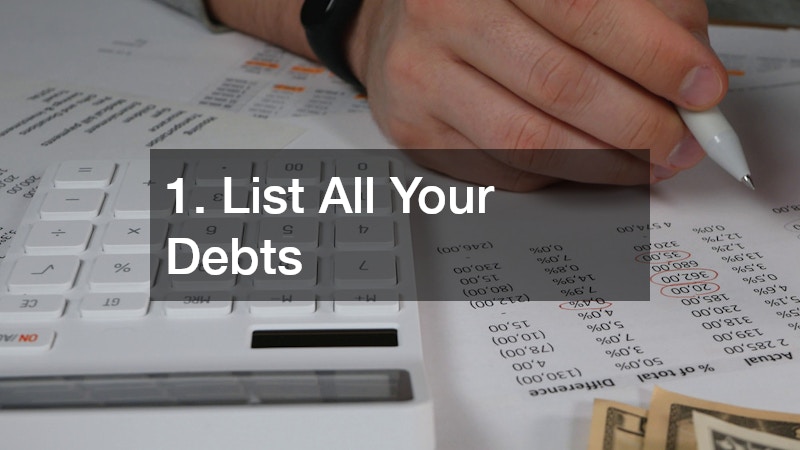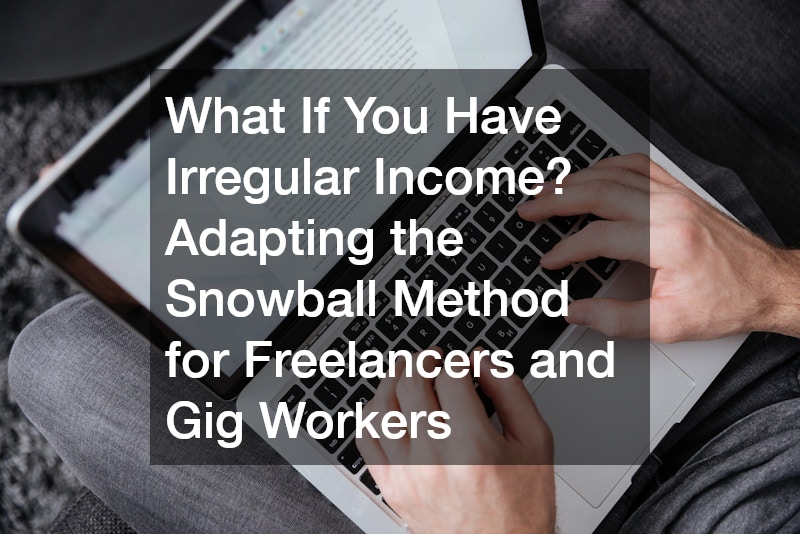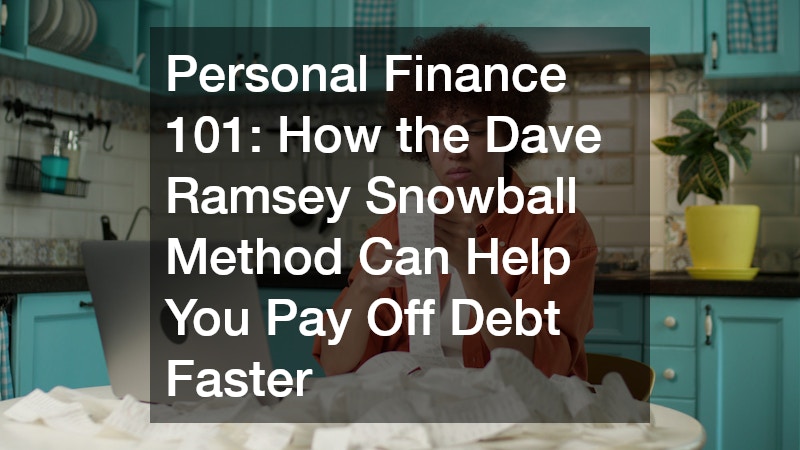
Getting out of debt can feel like trying to dig your way out of a sinkhole. No matter how much you throw at it, the pile seems to grow with interest, fees, and stress. But one of the most popular strategies for breaking free from the debt cycle is the Dave Ramsey Snowball Method—a personal finance strategy designed not just for numbers, but for mindset and momentum.
In this article, we’ll explore how this method works, why it’s helped millions take control of their finances, and how you can implement it starting today—even if you feel stuck in a financial rut.
What Is the Dave Ramsey Snowball Method?
Before jumping into tactics, it’s important to understand the concept behind the Snowball Method. The Dave Ramsey Snowball is a debt repayment strategy where you pay off your debts from smallest to largest, regardless of interest rate. The method prioritizes behavior and motivation over mathematical efficiency.
Here’s how it works:
- List all your debts, from the smallest balance to the largest.
- Pay the minimum amount for all your debts, except the smallest ones.
- Put any extra money you can toward the smallest debt.
- Once that’s paid off, roll the amount you were paying into the next smallest debt.
- Repeat the process until you’re completely debt-free.
The momentum gained by knocking out small debts quickly gives you a psychological boost—a win that keeps you going.
Why Does the Snowball Method Work So Well for Personal Finance?
While it might not be the most mathematically efficient method (since it doesn’t focus on interest rates), the Dave Ramsey Snowball works because it focuses on human behavior.
Key reasons it works:
- Quick wins build confidence.
- It helps form positive financial habits.
- There’s a clear sense of progress.
- It reduces the feeling of being overwhelmed.
Many people know what to do with their money, but struggle to actually do it. The Snowball Method addresses that gap between knowledge and action.
How to Set Up the Dave Ramsey Snowball Plan in 5 Simple Steps
Getting started doesn’t require any complicated spreadsheets or fancy apps. Here’s how to begin today:
1. List All Your Debts

Write down everything you owe. Include:
- Credit cards
- Personal loans
- Medical bills
- Car loans
- Student loans
Sort them by balance size, smallest to largest.
2. Stick to the Minimums (Except One)
Make minimum payments on every debt except the smallest one.
3. Attack the Smallest Debt
Throw any extra cash you have—side income, bonuses, or budget cuts—toward that smallest balance.
4. Roll It Forward
Once the smallest debt is paid off, take that payment and apply it to the next smallest debt.
5. Stay the Course
Rinse and repeat until you are completely debt-free.
This method works especially well if you’re struggling with multiple small debts that feel like they’re chipping away at your peace of mind.
Is the Snowball Method Right for You?
The Dave Ramsey Snowball Method is ideal for people who:
- Are overwhelmed by their debt
- Need structure and motivation
- Thrive on quick results
- Prefer simplicity in financial planning
It may not be perfect if you’re laser-focused on saving money on interest. In that case, the Avalanche Method—which pays debts from highest interest to lowest—might be better. But if behavioral change is your goal, the snowball may be your best ally.
Dave Ramsey Snowball vs. Avalanche: Which One Wins?
Both methods are proven. The choice depends on what works best for you.
| Feature | Snowball Method | Avalanche Method |
| Order | Smallest balance first | Highest interest first |
| Focus | Motivation | Mathematics |
| Best for | Behavior-driven payoffs | Saving money long-term |
| Risk | May pay more in interest | May take longer to see wins |
For example, if you owe:
- $500 (credit card, 18%)
- $2,000 (personal loan, 10%)
- $10,000 (student loan, 6%)
Snowball pays off the $500 first, giving you a fast win. Avalanche would prioritize the $500, too, in this case—but if the interest rates differed, Avalanche might tackle a larger balance first, delaying emotional satisfaction.
Common Mistakes to Avoid When Using the Snowball Method
While simple, the snowball plan can go off track without the right mindset.
Mistake #1: Not Building a Budget First
You can’t throw money at debt if you don’t know where it’s going. Budgeting ensures you have control.
Mistake #2: Stopping After One Win
Some people stop after their first debt is paid off. Don’t. Keep the momentum going.
Mistake #3: Ignoring Interest Rates Entirely
If two debts are close in size, consider prioritizing the one with the higher interest rate.
Mistake #4: Not Adjusting for Emergencies
Have a small emergency fund before starting. Otherwise, one car repair can undo months of progress.
How to Find Extra Money to Fuel Your Debt Snowball
One of the most common objections to the snowball method is: “I don’t have any extra money.”
But with some adjustments, you may find more than you expect.
Here’s how:
- Cut non-essential expenses (subscriptions, dining out)
- Sell unused items (clothing, electronics, furniture)
- Take on side gigs (freelance, delivery apps, tutoring)
- Use windfalls wisely (bonuses, tax refunds)
Every dollar counts. Even $50 a month extra can snowball into serious progress over time.
How to Stay Motivated During Your Debt-Free Journey
Paying off debt is a marathon, not a sprint. Here’s how to keep going when the road gets tough.
Stay Motivated With:
- Visual charts (debt thermometers, checklists)
- Debt-free communities (online forums, social media)
- Celebrating milestones (just don’t celebrate by spending)
- Listening to success stories
Motivation can fade—but systems don’t. Build habits that keep you going, even when you’re tired.
Can the Dave Ramsey Snowball Work for You?
Absolutely—if you commit. The Dave Ramsey Snowball is not a magic solution, but a disciplined, repeatable framework that rewards progress.
It’s especially effective if:
- You’ve tried and failed other plans.
- You need emotional motivation more than cold calculations.
- You’re ready to take ownership of your financial future.
What If You Have Irregular Income? Adapting the Snowball Method for Freelancers and Gig Workers

One common challenge for many people trying to get out of debt is dealing with variable or unpredictable income. Freelancers, gig workers, and self-employed individuals often find it hard to commit to consistent debt payments—but the Dave Ramsey Snowball Method can still work with a few smart adjustments.
Here’s how to adapt the method:
- Base your budget on your lowest expected income from the past 3–6 months. This provides a conservative baseline.
- Create a prioritized spending plan (a “bare bones” budget) where minimum debt payments are always included.
- When you earn more than your baseline, allocate the extra toward your snowball target.
- Consider setting aside a buffer or income smoothing fund so you’re not forced to rely on credit when a lean month hits.
The key is to make debt payoff a non-negotiable priority while maintaining flexibility during income fluctuations. You may progress slower than someone with a steady paycheck, but consistency—even if it’s modest—will pay off in the long run.
How to Combine the Snowball Method with Other Personal Finance Tools
The Dave Ramsey Snowball works best when integrated into a well-rounded personal finance system. Here are a few tools and practices that can amplify its impact:
Budgeting Apps
Apps like EveryDollar, YNAB (You Need A Budget), or Mint can help you track your debt payments and progress in real time.
Sinking Funds
These are savings buckets set aside for irregular or expected future expenses (like car repairs, holidays, or property taxes). They prevent you from falling back into debt when life throws a curveball.
The Debt Snowflake Strategy
This approach involves making tiny, frequent payments (like $5 or $10 from spare change or rewards apps) to your smallest debt in addition to your regular snowball payments. It’s a great psychological and financial boost.
Accountability Partners
Joining a debt-free group or simply sharing your goals with a trusted friend can help you stay on track, especially when temptation strikes.
By using these tools alongside your snowball plan, you’re not just paying off debt—you’re rebuilding your financial foundation.
What Comes After Debt Freedom? Your Next Personal Finance Goals
Many people get laser-focused on becoming debt-free but forget to plan for what comes next. The journey doesn’t end with your final payment—it’s just the beginning of a new phase of personal financial independence.
After you’re debt-free, consider these steps:
- Fully fund your emergency fund (3–6 months of expenses).
- Invest 15% of your income into retirement accounts (401(k), Roth IRA).
- Start saving for big goals—a home, a child’s education, or starting a business.
- Pay off your mortgage early if homeownership is part of your plan.
- Build wealth and give generously—one of Dave Ramsey’s core final steps.
Debt freedom gives you back your most powerful wealth-building tool: your income. With no more payments holding you back, you can move from survival mode to thriving and growing your net worth over time.
Final Thoughts: The First Step Is the Hardest
The scariest part of getting out of debt is starting. But once you begin, momentum builds quickly. The Dave Ramsey Snowball Method is more than just a strategy—it’s a mindset shift.
You’re no longer surviving paycheck to paycheck. You’re taking control of your personal finances.
And when you finally make that last debt payment, the freedom is more than financial. It’s mental, emotional, and life-changing.
